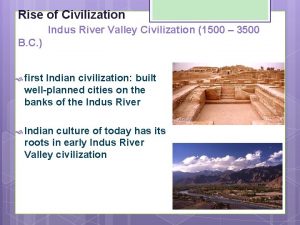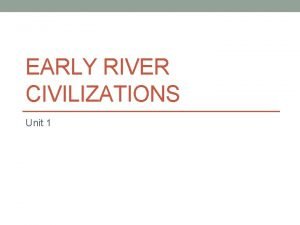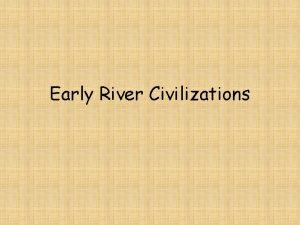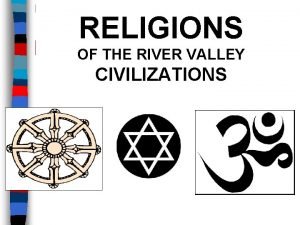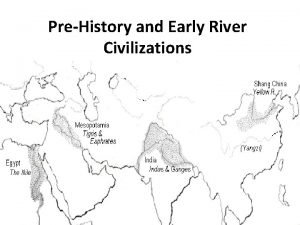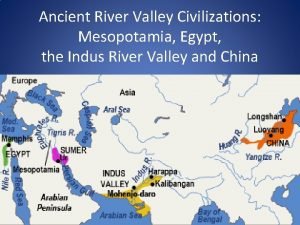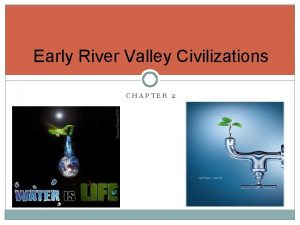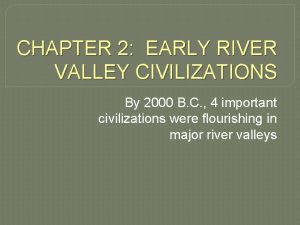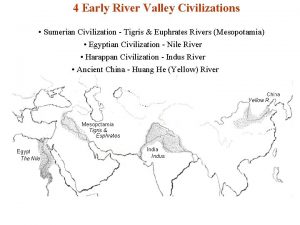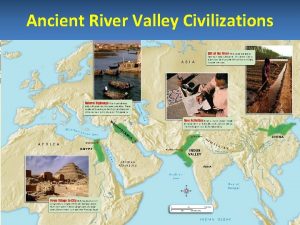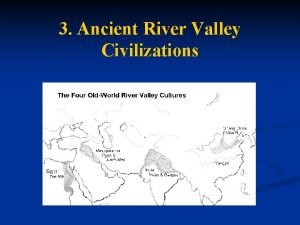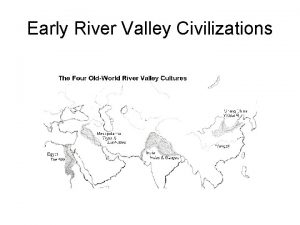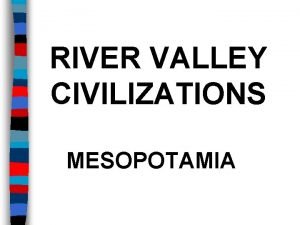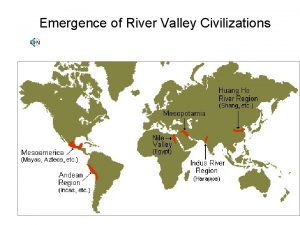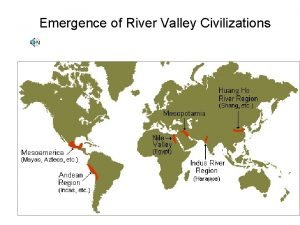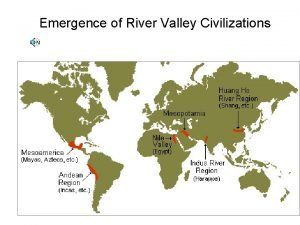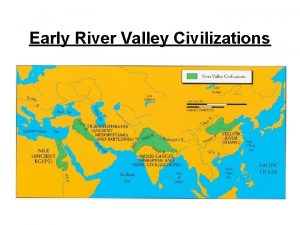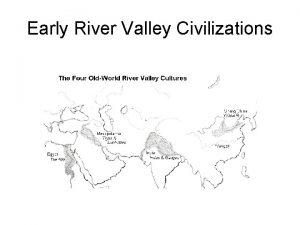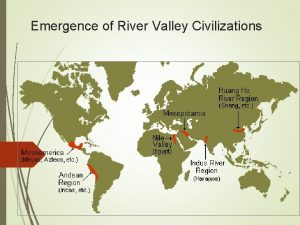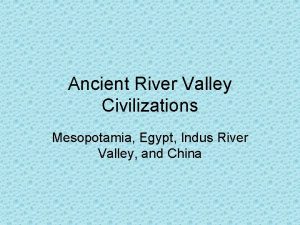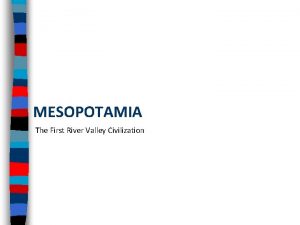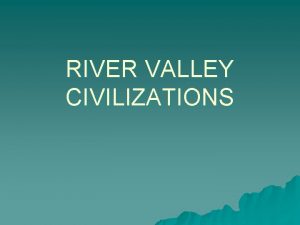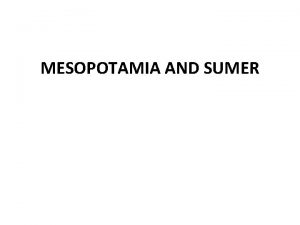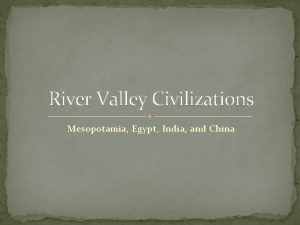Mesopotamia Emergence of River Valley Civilizations MESOPOTAMIA The
















- Slides: 16

Mesopotamia

Emergence of River Valley Civilizations

MESOPOTAMIA “The land between two rivers”

Mesopotamia: The Fertile Crescent • This region was the site of sophisticated settlements. • Fertile area located in the northern part of the Syrian desert. • Area includes all or parts of Israel, the West Bank, Jordan, Lebanon, Syria, and Iraq. • The Mediterranean Sea to the west and on the east the Euphrates and Tigris rivers

• Greeks called the northern part of the Fertile Crescent Mesopotamia • The southern part of Mesopotamia was called Babylonia, originally Sumer.

Sumer – Southern Mesopotamia • The earliest of the River Valley Civilizations • Sumerian civilization grew up along the Tigris and Euphrates Rivers in what is now Kuwait.

Sumer (Kuwait) • 3500 to 3000 BC • Sumerians created the city-state. • City-state - a political unit made up of a city and the surrounding lands. - each city state has its own government - As city-states grew, they fought each other for land water.

Sumerian Writing: Cuneiform is created by pressing a pointed stylus (sharp pointed tool) into a clay tablet.

Sumerians invented: • • Brick technology Wheel Base 60 – using the circle. . . 360 degrees Time – 60 minutes in an hour, 60 seconds in a minute Arch Ramp Ziggurat – stepped tower with religious temple on top Astronomy

Ziggurat– Holy Mountain

Sumer becomes Babylon • 2340 BCE Akkadians created the first empire controlling the Sumerian city-states. • By 1792 BCE Hammurabi unites much of Mesopotamia, and the city-state of Babylon controlled much of the area • Hammurabi created the first known written code of law and required citizens to live by the “Rule of Law” • rule of law - government can only exercise, or use, its authority as described in written laws. Written laws were adopted through established

Hammurabi’s Code - 1792 BC • Hammurabi ruled the Babylonian Empire for 42 years. • At the end of his long reign, Hammurabi’s legal decisions were collected and inscribed on a stone tablet in a Babylonian temple. • The 282 laws of the Code

“If a man stole the property of church or state, that man shall be put to death; also the one who received the stolen goods from his hand shall be put to death. ” • The laws governed such things as lying, stealing, assault, debt, business partnerships, marriage, and divorce. • In seeking protection for all members of Babylonian society, Hammurabi relied on the philosophy of equal retaliation, otherwise known as “an eye for an eye. ”

REVIEW Mesopotamia means “Between Two Rivers” Name the two rivers. Name two countries of Mesopotamia today? Which came first – Babylonia or Sumer? What is the writing of Sumer called? Where did Hammurabi rule? What was Hammurabi know for?

Activity • We will read 3 cases about crimes that may have been committed during the time of Hammurabi.

Hammurabi’s Code Questions • On a lined piece of paper, answer the following questions about the Code of Hammurabi. a. What did you find most interesting about each case? b. Which laws do you believe were fair? Unfair? c. Which laws from the Code of Hammurabi are similar to laws we have today? d. Which laws are different from laws we have today? e. Which Babylonian values do you think are similar to American values? Which values are different? f. How would you feel about living in a community that used the laws from the Code of Hammurabi?
 River valley civilizations
River valley civilizations Ancient river valleys map
Ancient river valleys map Tigris euphrates and nile river
Tigris euphrates and nile river River valley civilizations religion
River valley civilizations religion River valley civilizations map
River valley civilizations map 4 river valley civilizations
4 river valley civilizations Chapter 2 early river valley civilizations
Chapter 2 early river valley civilizations River valley civilizations def
River valley civilizations def River valley civilizations vocabulary
River valley civilizations vocabulary River valley civilizations map
River valley civilizations map Ancient river valley civilizations powerpoint
Ancient river valley civilizations powerpoint Yellow river civilization map
Yellow river civilization map Indus river valley job specialization
Indus river valley job specialization River valley civilizations definition
River valley civilizations definition 4 river civilizations
4 river civilizations Did william pitt open the ohio river valley
Did william pitt open the ohio river valley Ohio valley river
Ohio valley river
